11521 A SPECTACULAR HARDWOOD CENTER TABLE CARVED WITH ELEPHANT AND COBRA MOTIFS Indian, Likely Gujerat Region. First Half of the Nineteenth Century. Measurements: Width: 60″ (152.4 cm) Height: 30″ (76.2 cm) Depth: 35 1/4″ (89.5 cm)
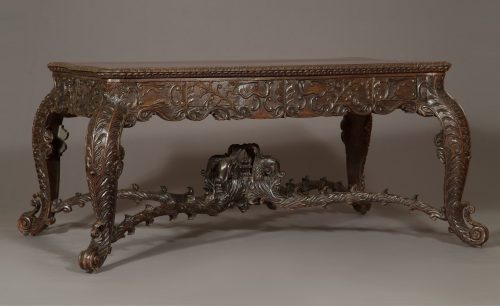
Research
Of tropical hardwood. The shaped well figured top with curved egg and tongue edge rests upon a foliate and cobras carved frieze with two concealed drawers to one side. The foliate carved shaped legs terminating in a pierce scrolled double toe. The four legs united by an undulating foliate carved stretcher centered by a finial surmounted by four rearing carved cobras.
This table is an example of the European-influenced furniture produced in India as a result of centuries of colonial rule by the Portuguese, Dutch, English and French, and exhibits a mastery of carving and design by a native craftsman. While the form recalls baroque and rococo tables of the Europe, the carved decoration of exotic vines, elephants and cobras is specific to the Asian continent.
In Hindu religion the cobra appears to represent Time. Numerous Hindu deities are depicted with cobras, indicating that they are eternal beings not subject to the effects of time. Shiva is particularly associated with the serpent and is often depicted with a cobra, Vāsuki, coiled round his neck (figure 1). Lord Vishnu is represented in control of a multi-headed cobra as well as resting on a bed with cobras, while Ganesh, in the form of an elephant, wears a cobra around his stomach. In the latter case, the snake is understood to be a reference to Shiva, his father.
The chubby, gentle and wise elephant-headed Ganesh, or Ganesha, is one of Hinduism’s most popular deities, widely revered as patron of the arts and sciences, and the deva of intellect and wisdom. Ganesh is the remover of obstacles, the deity whom worshipers first acknowledge when they visit a temple. Statues of Ganesh can be found in most Indian towns. He is invoked for auspicious beginnings; his image is placed where new houses are to be built; he is honored at the start of a journey or business venture, and poets traditionally invoke him at the start of a book. Ganesh is also patron of letters and of learning; he is the legendary scribe who, using his commonly held broken tusk, wrote down parts of the Mahabharata Epic.

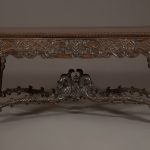
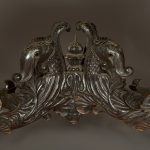
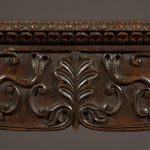


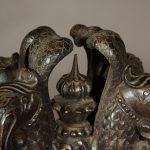
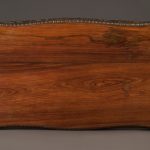
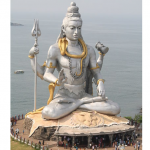
Comments are closed.